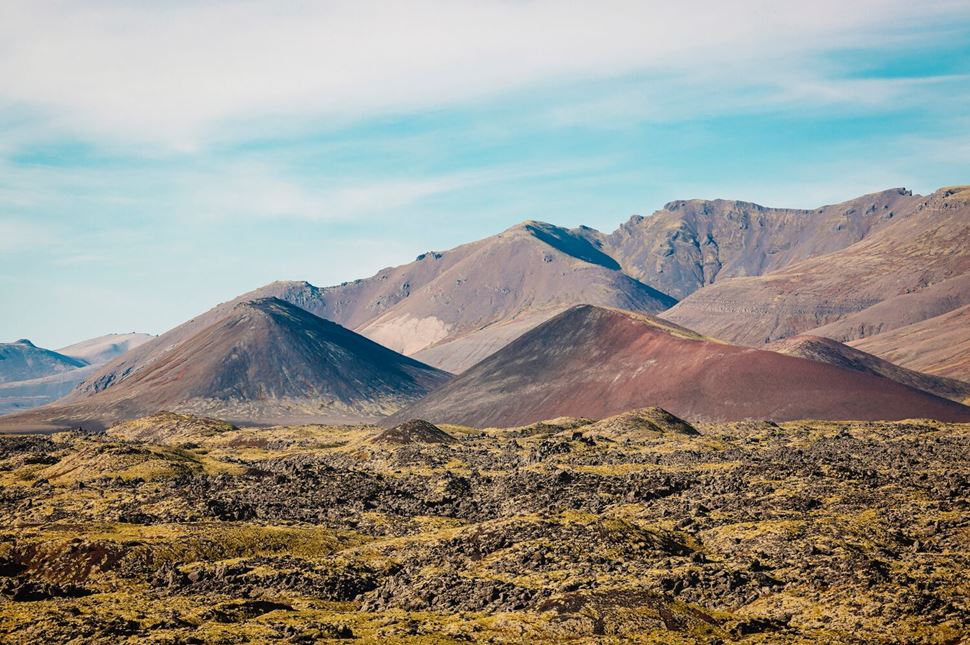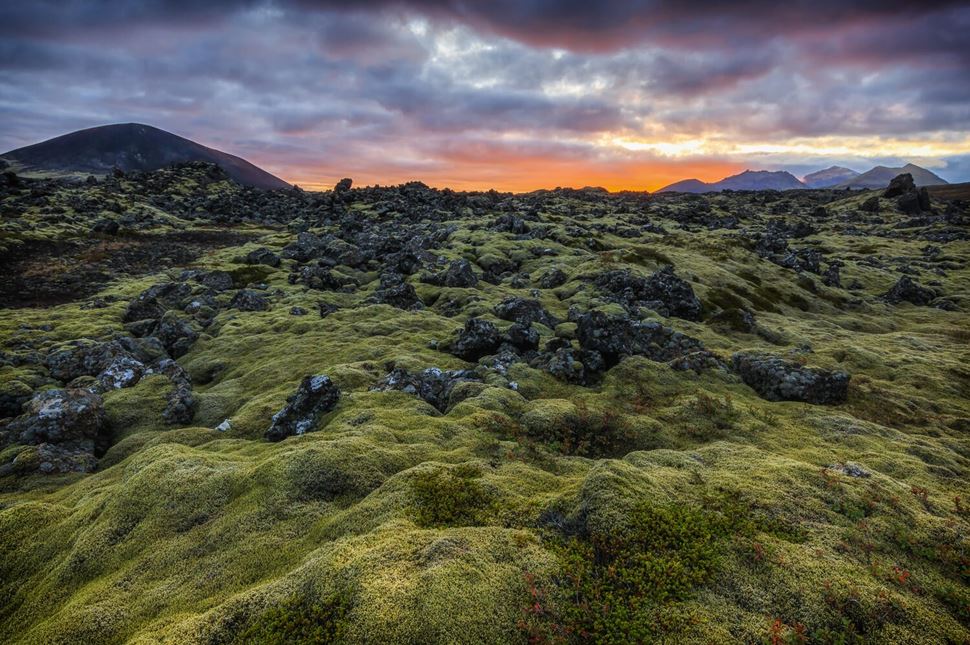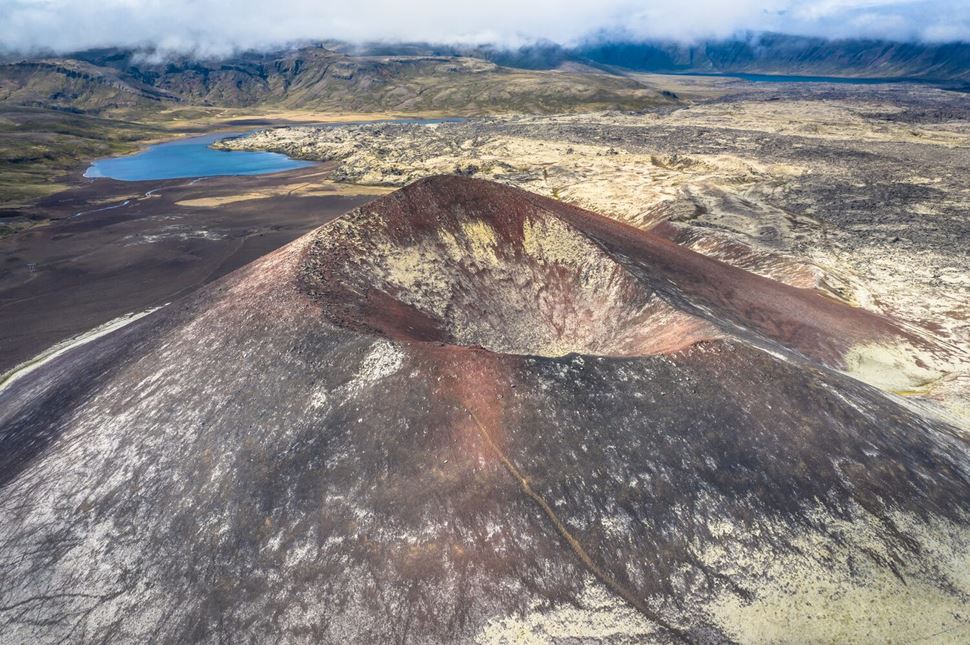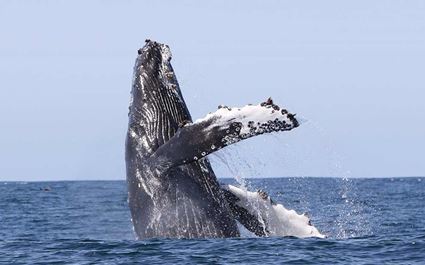Where Is Berserkjahraun Lava Field Located?
The lava field is located on the Snæfellsnes Peninsula, the westernmost part of Iceland. It's approximately 2 hours from Reykjavík and about halfway between the towns of Stykkishólmur and Grundarfjörður.
Berserkjahraun's exact coordinates are:
- 64.9631° N
- 22.9711° W

How To Get To Berserkjahraun?
Berserkjahraun is easily accessible by car. Take the Ring Road north to Borgarnes if you're traveling from Reykjavík. After passing Borgarnes, you'll take Route 54 (Snæfellsnesvegur) west towards Stykkishólmur. Before reaching Stykkishólmur, you'll see a Road 558 sign. Follow the road for about 6 kilometers to reach Berserkjahraun. You'll find a small parking lot at the entrance to the lava field. You can walk or drive a short distance from there to the trailhead.
General Information About Berserkjahraun
- Location Snæfellsnes Peninsula, West Iceland
- Part of Ljósufjöll volcanic system
- Originated 4,000 years ago
- Created by Volcanic activity
- Accessibility Car
- Time to Visit All Year
- Activities Hiking, photography, wildlife-watching
What Is Berserkjahraun Known For?
Berserkjahraun lava field is remarkable for its old, captivating history, and unique geological features. One of these features is the abundance of obsidian, the dark glass naturally produced by the cooling of lava. Obsidian rocks sparkling under the sun create a captivating kaleidoscopic environment. Paired with reddish hues of lava formations, it is a striking contrast of colors and textures that creates an otherworldly atmosphere.

The place is more than a geological wonder; it is a haven for wildlife. Arctic foxes, rabbits, and birds find refuge amidst the lava formations, adding a touch of life to this seemingly deserted land. Observing these creatures in their natural habitat is an enchanting experience.
History Of Berserkjahraun
This ancient landscape was formed around 4,000 years ago by volcanic eruptions. The lava, flowing from a series of craters known today as the Ljósufjöll volcanic system, flooded the area and created the original terrain of Berserkjahraun. The lava's rapid cooling resulted in the formation of jagged obsidian rocks, giving the field its distinctive dark appearance.
Over time, wind and rain sculpted these rocks into a labyrinth of abstract formations, adding to the field's unearthly aura. Today, the lava is covered in a thick layer of moss that looks like a soft carpet in contrast to the otherwise rugged terrain.
Berserkjahraun lava field is steeped in folklore and local legends. Its name means "Berserker's lava field," referring to the story of the 13th century's Eyrbyggja saga. According to the saga, a farmer brought two berserkers from Sweden to Iceland. He gave the berserkers to his brother, who lived on the other side of the lava field. One of the Swedes fell in love with their new owner's daughter and asked to marry her.
The owner made a deal with the berserker: If he could clear a path through the lava field, he could marry his daughter. The berserkers agreed and worked tirelessly to complete the task, using their axes and bare hands. They eventually finished the path, but the deal was withdrawn. The owner had the berserkers killed instead before burying them near the path.

Interesting Facts About Berserkjahraun
- Berserkjagata ("Berserker's Road"), the path completed by the berserkers, is still visible today.
- Recent archaeological works uncovered the remains of two large individuals, adding authenticity to the legendary tale.
- Today, the field is part of the Snæfellsnes UNESCO Global Geopark, a designation that recognizes the area's geological significance.
What To Do At Berserkjahraun Lava Field?
The lava field is a popular destination for hikers and adventurers alike. There are several things to do there, including:
- Hiking: There are several hiking trails of varying difficulty levels that crisscross the lava field. The trails offer stunning views of the mountains, fjords, and the ocean.
- Exploring lava formations: Berserkjahraun is home to fascinating lava formations, including lava tubes, craters, and pillars. You can wander around the lava field and explore these natural wonders at your own pace.
- Learning about Icelandic history: The place has a rich history connected to Viking mythology and folklore. You can learn about the area's history by visiting the information boards at the trailhead.
- Photography: Berserkjahraun's landscape is a photographer's dream. The contrasting moss-covered lava, the rugged mountains, and the ocean create a stunning backdrop for your photos.
- Enjoying the serenity: It is a peaceful and tranquil place. Take some time to relax and enjoy the serenity of the lava field.
Whatever you decide to do, make sure to dress for the weather and wear sturdy hiking boots. The lava field can be slippery and uneven, so it is important to take your time and be careful. Also, be aware of the weather conditions as Icelandic weather can change quickly.

Best Time To Visit Berserkjahraun
Berserkjahraun lava field is a beautiful place to visit year-round, but the best time to go will depend on your preferences and expectations.
Summer (June-August) is the most popular time as the weather is mild and sunny. The trails are moderately crowded during this time of year.
Autumn (September-November) is another excellent time to visit the field because the leaves change colors and the weather is still pleasant. The crowds are thinning out, so you'll have more space to explore.
Winter (December-March) is the off-season for Berserkjahraun, but it can be a magical time to visit. The snow-covered lava field is a stunning sight, and the Northern Lights are often visible in the sky. However, the trails can be icy and slippery, so it's important to dress warmly and wear proper footwear.
Spring (April-May) is a time of renewal as the flowers bloom and the birds return. The weather is starting to warm up, but it can still be chilly in the mornings and evenings.

Where To Stay Near Berserkjahraun?
There are many great places to stay near Berserkjahraun, all with unique charm and amenities. Here are a few options:
- Fosshótel Stykkishólmur: This modern hotel is located in the charming town of Stykkishólmur, just a short drive from Berserkjahraun. The hotel offers comfortable rooms, a restaurant with stunning fjord views, and a spa.
- Kirkjufell Guesthouse and Apartments: This highly-rated guesthouse in Grundarfjörður offers modern rooms with stunning views of Kirkjufell mountain. They also have apartments with kitchenettes, perfect for longer stays.
- Snæfellsnes Farmhouse: This family-run farmhouse is located in Grundarfjörður, a picturesque town on the Snaefellsnes Peninsula. The farmhouse offers cozy rooms, a delicious breakfast, and a variety of activities, such as hiking, fishing, and horseback riding.
- Akkeri Guesthouse: This high-rated guesthouse is located in Stykkishólmur and offers basic but clean rooms, some with terraces.
- Skjólsteinar: This cozy guesthouse is also located in Grundarfjörður. The guesthouse offers modern rooms, a shared kitchen, and a sauna.










